Korean Fish Cake Soup (Odeng Guk)
Korean Fish Cake Soup (Odeng Guk) is a cozy, street-style broth simmered with fish cakes, Korean radish, and anchovy stock. This light, savory soup captures the warmth of Korea’s winter stalls — simple, nostalgic, and perfect for chilly days.
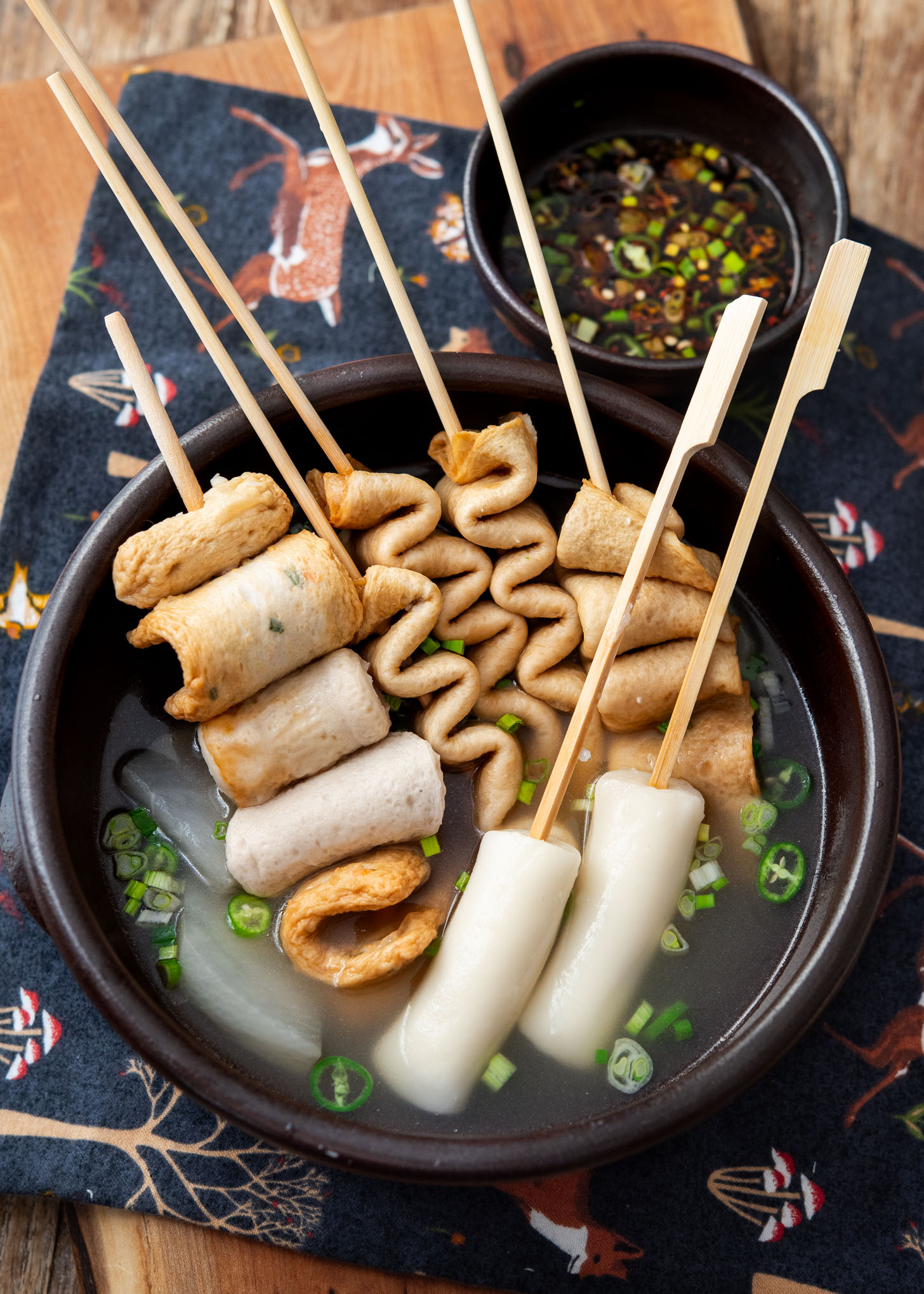
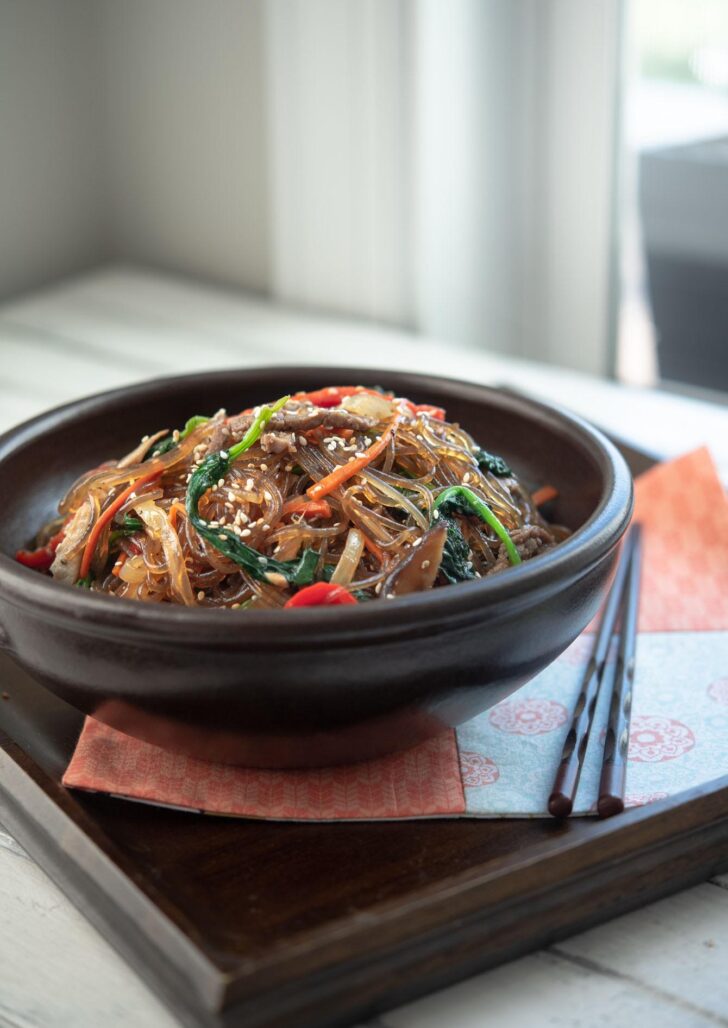
Get new recipes via email:
About Odeng Guk (Eomuk Guk)
Fish cake soup is known by a few names in Korea — odeng guk, eomuk guk, or odeng tang when served right from the pot. “Odeng” is the old term borrowed from Japanese, while “eomuk” is now the native Korean name.
I still call it odeng guk because that’s what I grew up hearing. Whatever you call it, it’s the same soul-warming broth simmered with chewy fish cakes and Korean radish.
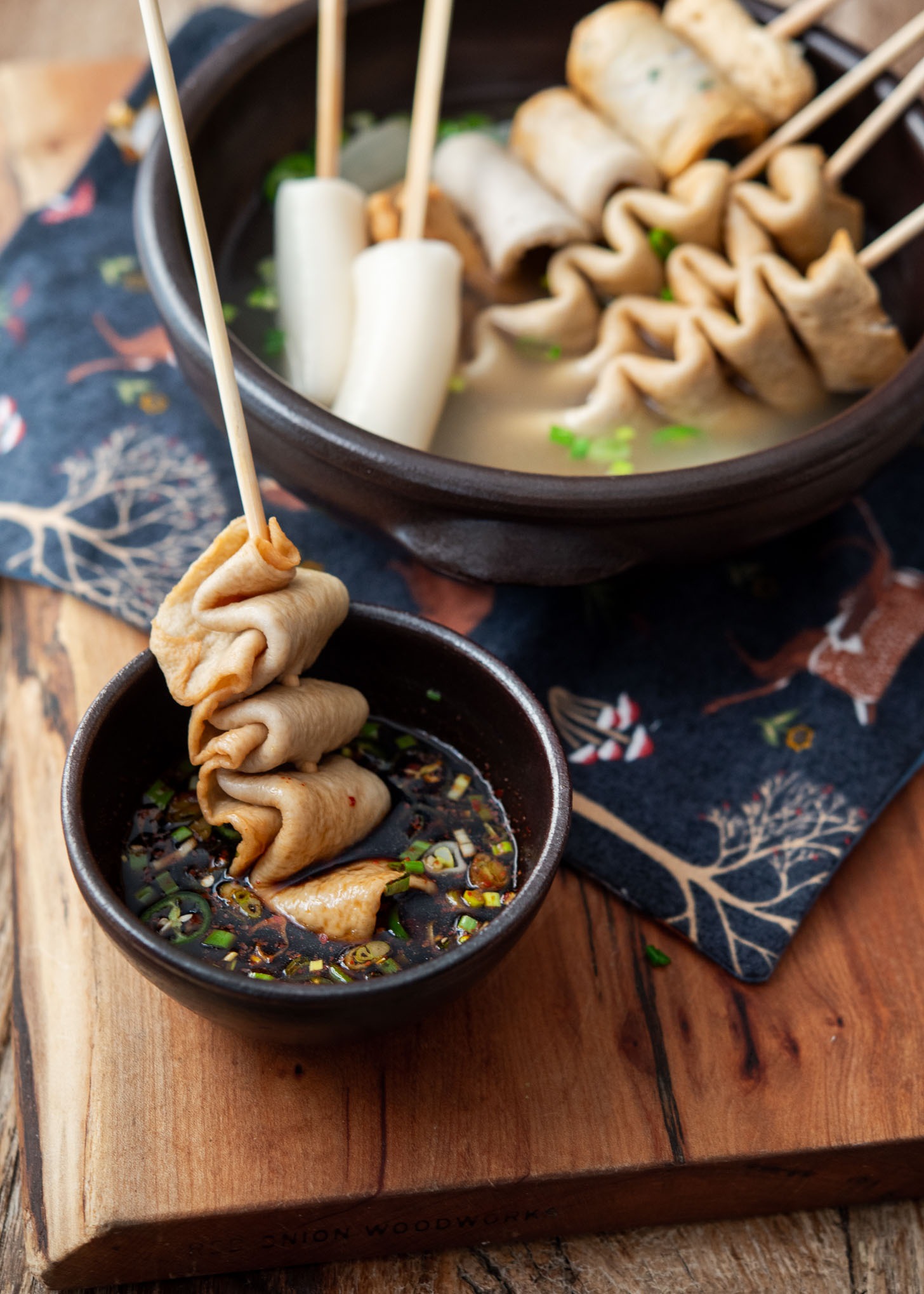
What Makes This Soup Special
The secret to a good odeng guk is the broth — light yet deeply savory from anchovy dashi and radish. A small splash of tuna sauce (or tsuyu) adds gentle umami, and the fish cakes absorb it beautifully for a soft, juicy bite.
Key Ingredients and Tips

Fish cakes (eomuk/odeng): Mix flat and round types for texture. You’ll find them in the frozen section of Korean markets. Pre-skewered versions are convenient, but I prefer threading my own for freshness and flexibility. I often use the same fish cakes to make tteokbokki (spicy rice cakes) and eomuk bokkeum (fish cake side dish).
Korean radish (mu): Adds natural sweetness and depth. Don’t skip it — it’s what separates a great broth from an average one.
Anchovy stock: I use either a dashi pack or the coin-style stock for convenience — both give a clean, ocean-rich flavor that’s perfect for odeng guk. When I have extra time, I make it from scratch with large dried anchovies and a piece of dried sea kelp (dashima). The homemade version has a deeper, rounder flavor just like the broth I remember from my childhood in Korea.
Rice cakes (optional): Long rice cake logs (garae-tteok) make the soup heartier and extra fun to dip in the sauce. You’ll often see this combination at Korean street food stalls where fish cake soup is sold — the chewy rice cakes soaking in hot broth are impossible to resist. I love it!
Soup seasoning: Korean soup soy sauce and tuna sauce (or tsuyu) give subtle umami without overpowering the delicate broth.
How to Make Korean Fish Cake Soup (Odeng Guk)
Optional Rice Cake Preparation
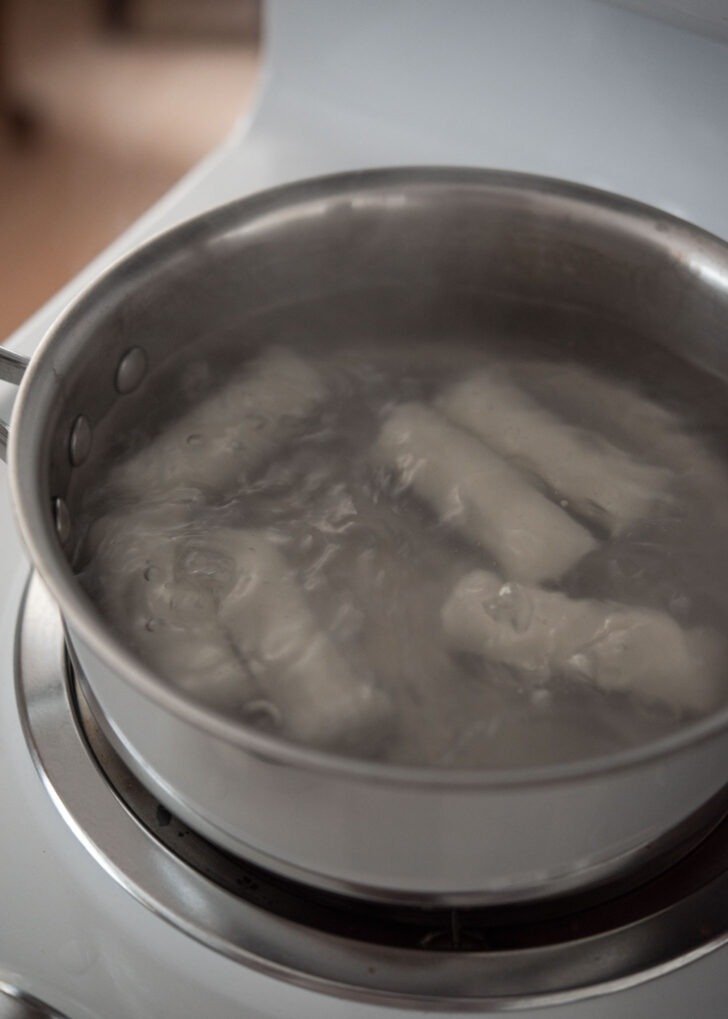
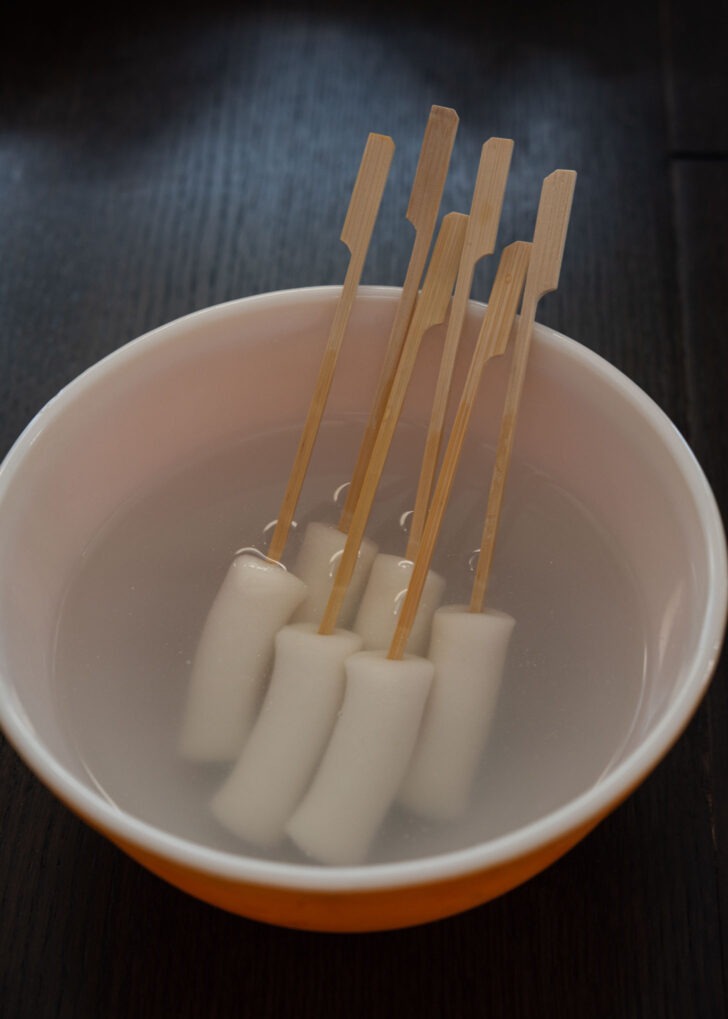
Prep the skewers. Thread the fish cakes onto long wooden skewers. If your rice cakes (garae-tteok) have been refrigerated, they’ll be quite firm. Briefly boil them until soft and pliable before threading; it makes the process much easier and prevents cracking. Keep the skewers soaked in warm water until you’re ready to cook so they stay moist and flexible.
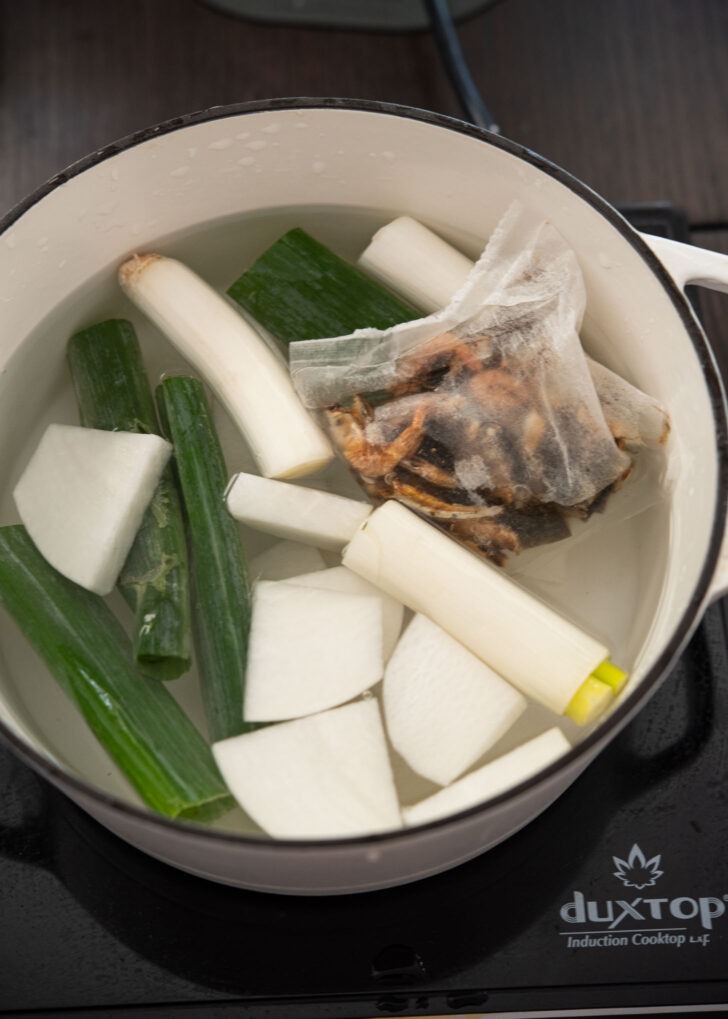
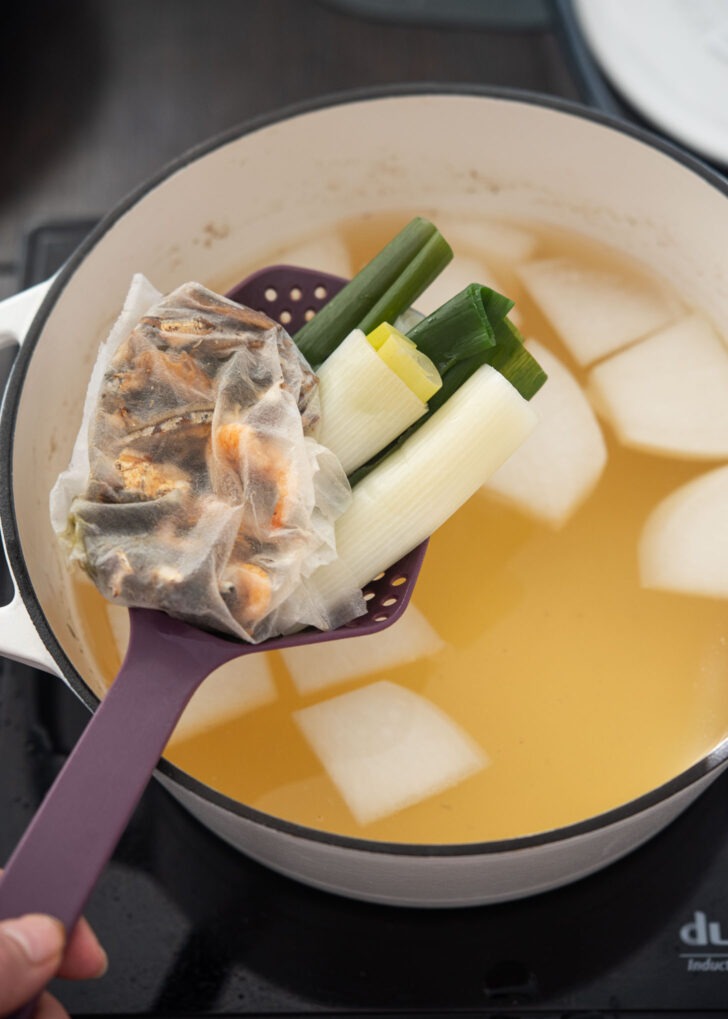
Build the base broth. Start with clear anchovy stock simmering gently with sliced Korean radish. As it bubbles, the radish softens and sweetens the broth. Skim the surface lightly to keep the broth clean and clear.

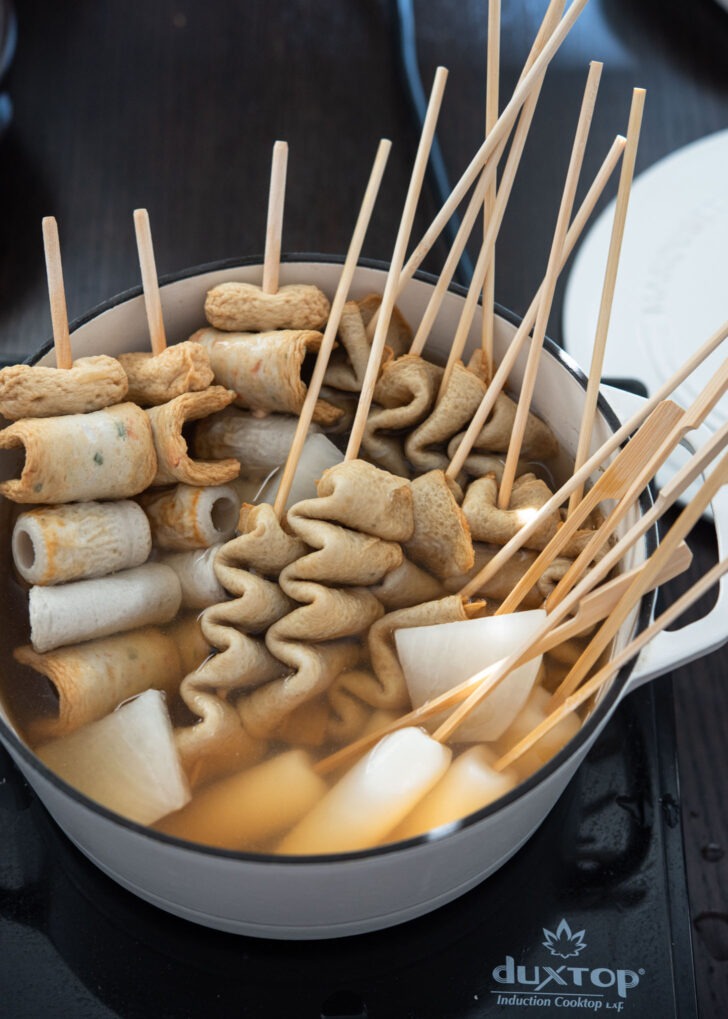
Simmer and infuse flavor. Once the broth is seasoned, gently lower the skewers in. The fish cakes will start to puff and absorb that savory umami broth. Occasionally ladle hot broth over the exposed parts so every bite soaks up flavor.
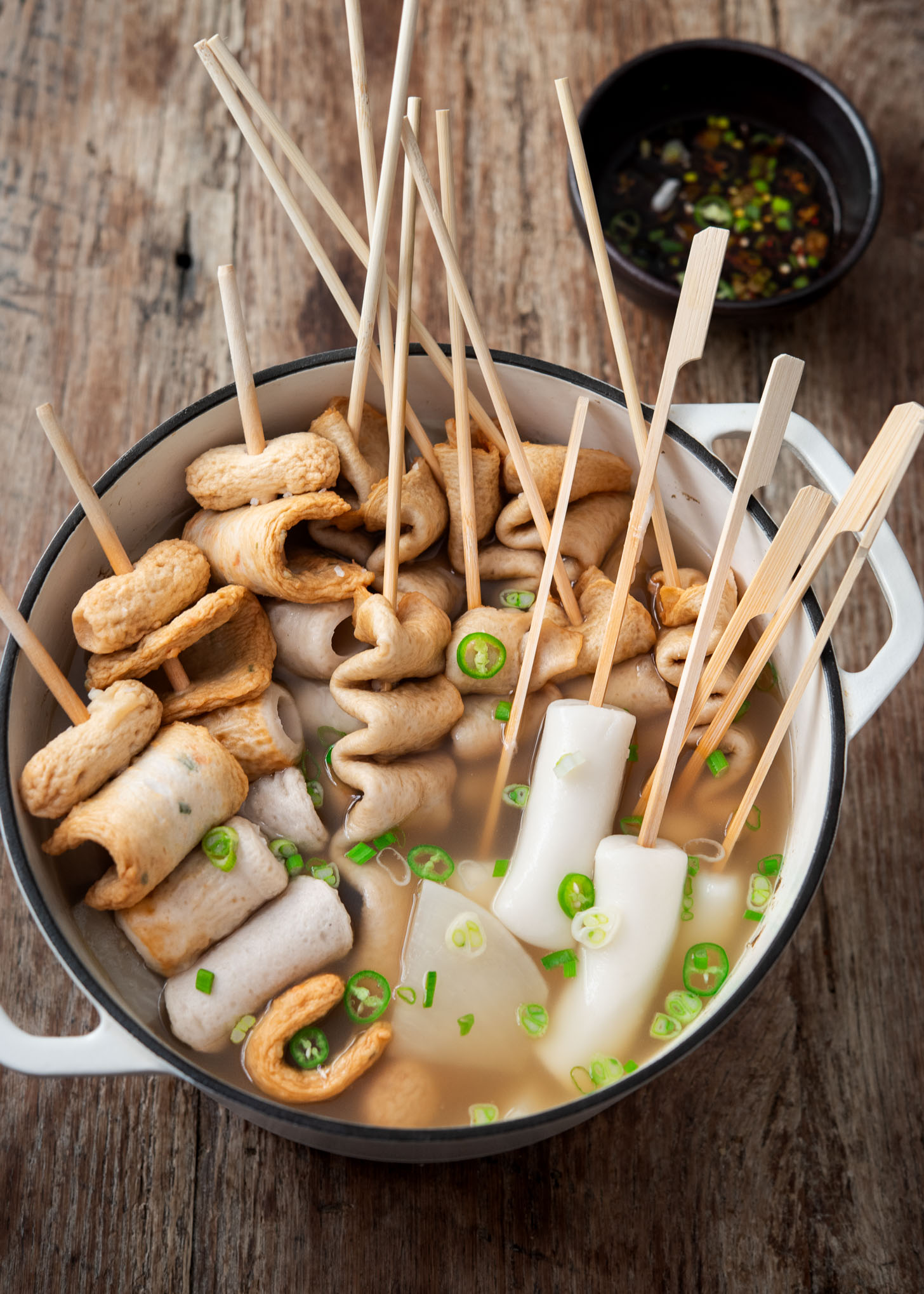
Serve street-style. I love serving odeng guk directly from the pot, with a simple soy-based dipping sauce on the side. It’s humble comfort food — the kind Koreans gather around on cold days. Add chili slices for a hint of heat and color.
Tip: For gatherings, keep the broth warm on low heat and top up with extra stock as needed. The flavor stays clean, and everyone gets a hot bowl.
If you love cozy noodle soups, try my Kimchi Udon Soup. It uses the same fish cake skewers and similar savory broth flavors with a spicy kick.
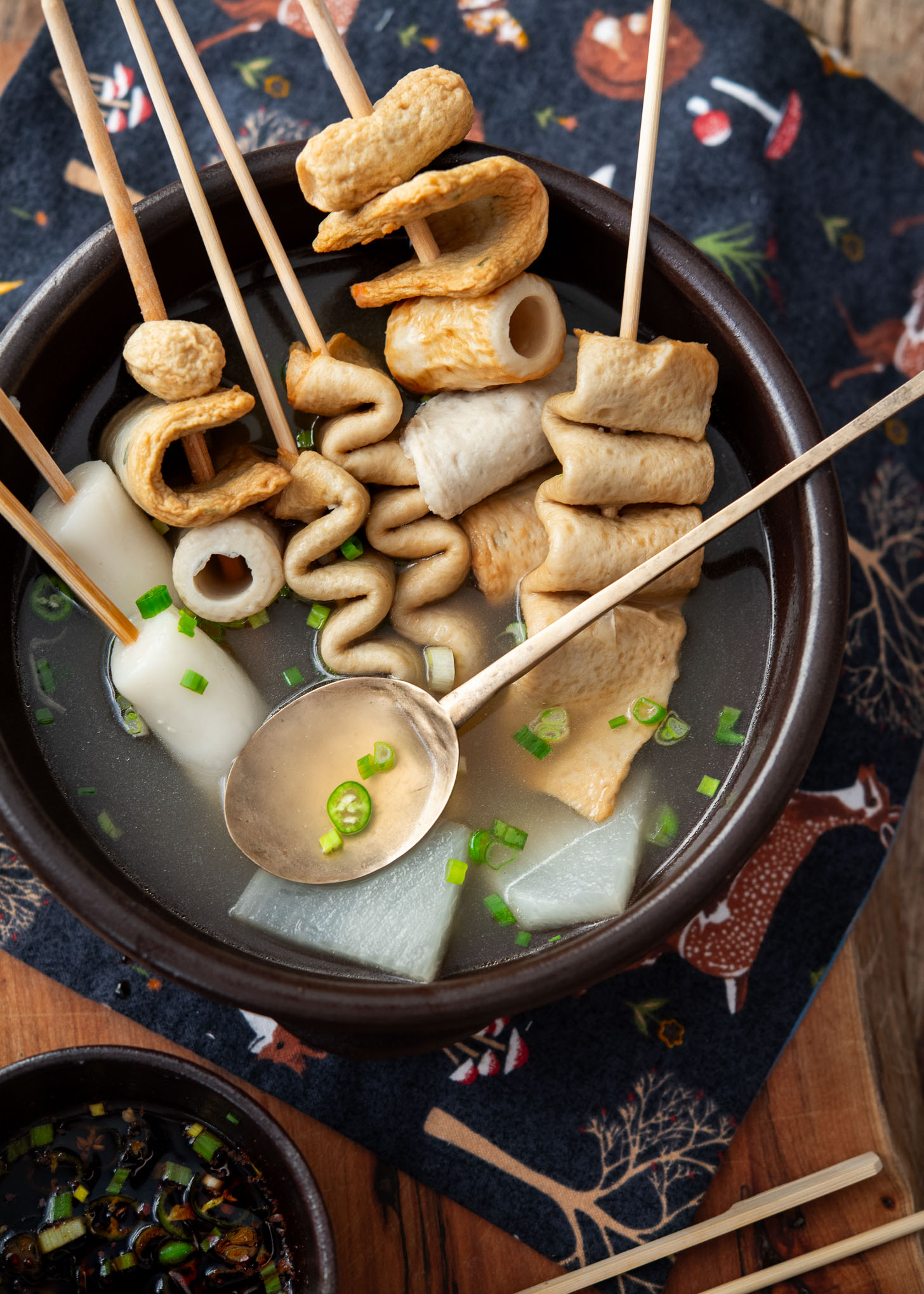
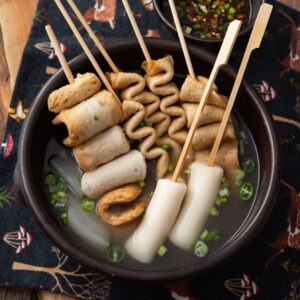
Korean Fish Cake Soup (Odeng Guk)
Ingredients
- 10 oz (300 g) flat fish cakes, skewered, see note below
- 10 oz (300 g) round fish cakes, skewered
- 7 oz (200 g) rice cake logs, optional
- 2 green onion, chopped
- 1 fresh chili, finely sliced
For soup broth
- 7 cups (1.6 liter) water
- 1 packet anchovy-kelp dashi packet, see note below
- 7 oz (200 g) Korean radish, sliced into 1/4-inch pieces
- 1 tbsp (15 ml) Korean soup soy sauce
- 1/2 tbsp (7.5 ml) Korean tuna sauce, or tsuyu
- 1/2 tbsp minced garlic
- salt and pepper , to taste
For dipping sauce
- 3 tbsp (45 ml) soy sauce
- 1 1/2 tbsp (22 ml) water
- 1/2 tbsp (3.5 g) Korean chili flakes (gochugaru)
- 1 tbsp (15 ml) rice vinegar
- 2 tbsp chopped green onion
- 1 tbsp chopped fresh chili, optional
Equipment
- 4-quart soup pot
Instructions
- To prepare rice cakes (optional): In a pot, boil water over medium heat. Add rice cake logs, cooking for 1-2 minutes until they are soft and tender. Drain and rinse the rice cakes with cold water to cool them slightly. Once warm to the touch, thread them onto long skewers. Soak them in water and set aside.
- To make the soup broth: In a 4-quart soup pot, combine 7 cups of water, anchovy stock dashi packet, sliced Korean radish, and Asian leek. Bring to a boil, then reduce heat to low and simmer for 10 minutes. Remove and discard the stock packet and leek, keeping the radish in the stock.
- Season the boiled stock with Korean soup soy sauce, tuna sauce (or tsuyu), salt, garlic, and pepper to taste.
- To make fish cake soup: Add fish cake skewers and rice cake skewers to the pot. It's fine if the skewers aren't fully submerged. Occasionally ladle the hot broth over any exposed parts of the fish cakes as they simmer.
- Once the fish cakes puff up slightly, the soup is ready to serve. Garnish with green onion and fresh chili to add a hint of spicy kick. Enjoy hot with the prepared dipping sauce.
- To make the dipping sauce: Combine all sauce ingredients in a bowl. Mix well and set aside for serving.
Notes
Love this recipe? Rate it and share your experience in the comments below! On Instagram? Tag me to showcase your creation. For more delicious recipes, subscribe to our newsletter!

